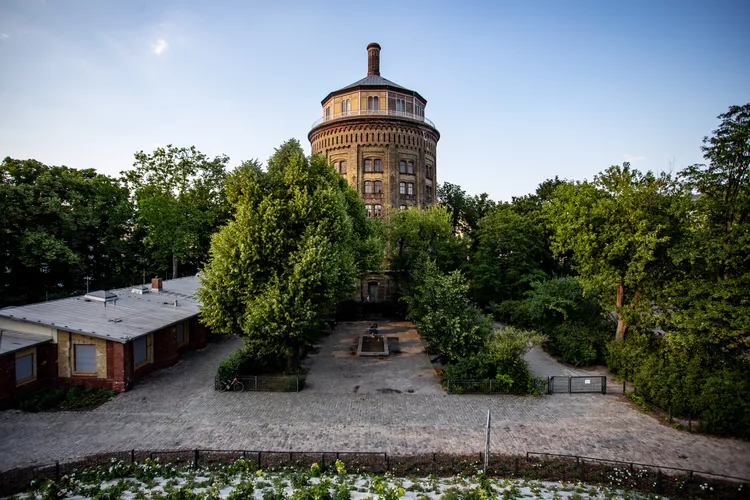Prenzlauer Berg: A Comprehensive Guide
Prenzlauer Berg is one of the most celebrated neighborhoods in Berlin, known for its thorough gentrification and appeal to young families. As you navigate through the area, you will encounter an impressive blend of magnificent architecture, chic shops, and vibrant eateries that continue to pop up.
Exploring this popular bezirk allows you to delve into its rich history, highlights, and practical information about how to reach it.
History of Berlin’s Prenzlauer Berg Neighborhood
Established as a distinct district in 1920, Prenzlauer Berg showcases the complexities of neighborhood divisions throughout Berlin. It became part of the Pankow Bezirk in 2001. Despite this, Prenzlauer Berg’s allure remains unmatched due to its historical significance and captivating aesthetics.
In 1933, around 160,000 Jews resided in Berlin, primarily concentrated in the Mitte and Prenzlauer Berg neighborhoods. This vibrant community maintained numerous schools, synagogues, and specialty shops until World War II forced approximately 236,000 Jews to flee Germany by 1939.
Under Nazi rule, many landmarks in Prenzlauer Berg transformed into temporary concentration camps and interrogation centers. Remarkably, over 80% of the elegant Wilhelmine altbaus survived World War II, remaining intact even as the city faced division and was absorbed into the Soviet Sector.
During this period, a significant East German counterculture found a home in Prenzlauer Berg, where bohemians and artists contributed to the peaceful revolution that led to the fall of the Wall in 1989.
Transitioning from a Jewish enclave to a hub of artists and then to one of Berlin’s wealthiest districts, Prenzlauer Berg has undergone rapid gentrification. Historic streets, organic ice cream shops, and family-friendly cafes create an inviting atmosphere, particularly along Kollwitzplatz and Kastanienallee.
What to Do in Berlin’s Prenzlauer Berg Neighborhood
With over 300 buildings designated as historic monuments, exploring Prenzlauer Berg is an enriching experience. Here are some notable attractions:
- Mauerpark: A vibrant park built atop a section of the Berlin Wall. Every Sunday, it hosts a popular flea market, with opportunities to engage with local artists and performers.
- Oderberger Strasse: A charming street lined with cafes, second-hand shops, and beautiful architecture, offering a relaxing atmosphere.
- Berlin Wall Memorial: This expanding memorial narrates the stark history of the Berlin Wall, featuring exhibitions and viewing platforms.
- Kulturbraurei: Originally a brewery, this complex now accommodates numerous artistic and social spaces, including cinemas and restaurants.
- Kastanienallee: This picturesque street features iconic establishments, including one of the oldest biergarten in the city, Prater.
- Rykestrasse Synagogue: The largest synagogue in Germany, rich in history and resilience, having survived the tumult of the Nazi regime.
- Volkspark Friedrichshain: A beautiful park offering diverse recreational spaces and amenities.
- Maria Bonita: A delightful taqueria renowned for its authentic Mexican cuisine, perfect for a casual meal.
- Konnopke’s Imbiss: A famous currywurst stand known for serving some of the best street food in Berlin since 1930.
- Gethsemane Church: A historical meeting point for activists during the peaceful revolution, still welcoming visitors today.
- Water Tower: An important landmark dating back to 1877, it has served various roles and now showcases residential apartments.
- Kollwitzplatz: A vibrant area surrounding the water tower, featuring urban living with amenities including an organic farmer’s market.
- The Bird: A popular restaurant recognized for its delicious burgers and welcoming ambiance.
Greater Pankow Neighborhood
The northern section of the Pankow district encompasses Weißensee and Buch, offering a predominantly residential area characterized by numerous parks and green spaces. As Prenzlauer Berg becomes increasingly unaffordable, many residents are relocating to this tranquil suburb.
How to Get to Berlin’s Prenzlauer Berg Neighborhood
Prenzlauer Berg is effortlessly accessible via Berlin’s efficient public transport system, including U-Bahn, S-Bahn, buses, and trams. It is situated approximately 30 minutes from Tegel Airport, 35 minutes from Schönefeld Airport, and 18 minutes from the central Hauptbahnhof.





